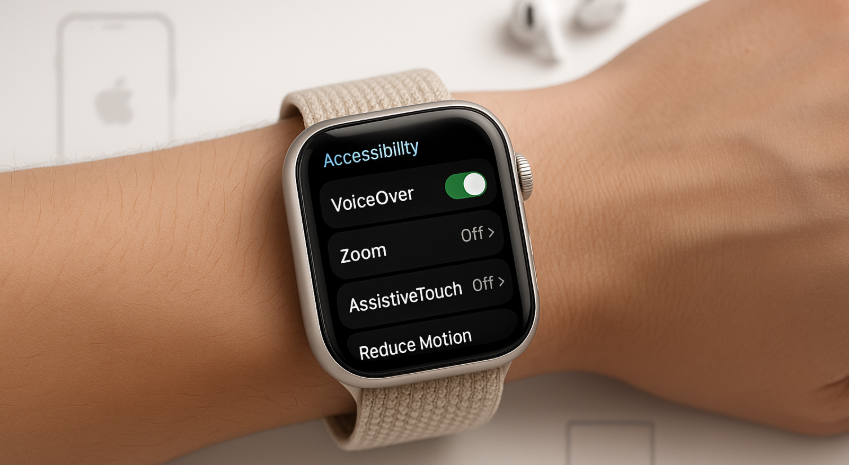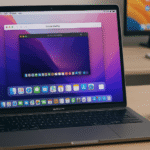The Apple Watch SE 2 has set a new benchmark in wearable tech not just for fitness tracking, but also for how it addresses accessibility. While the Apple Watch is known for its elegance and ecosystem integration, many users overlook the powerhouse of accessibility settings built into watchOS 10.
If you’re someone looking to unlock the full potential of your Apple Watch whether due to vision, hearing, or mobility challenges, or simply to optimize efficiency this guide will walk you through the most advanced, often hidden, accessibility settings that can transform your experience.
But first, if you’re new to the SE 2 model, we highly recommend reading our Apple Watch SE 2nd Gen – Ultimate Review & Comprehensive Guide 2025 to fully appreciate the hardware and software foundations of this guide
Why Accessibility Isn’t Just for Disability Use Cases
Many assume that accessibility settings are only for users with disabilities. In reality, these features enhance productivity, reduce cognitive load, and help customize the watch for daily use whether you’re an athlete, senior, student, or tech enthusiast.
Let’s dig deep into these advanced tools and how they can be leveraged for seamless Apple ecosystem integration.
Vision Accessibility Features
1. VoiceOver: Full Audio Guidance
VoiceOver provides spoken descriptions of what’s on the screen. This is immensely helpful not just for visually impaired users but also for scenarios where you can’t look directly at the screen (e.g., cycling or multitasking).
How to Enable: Settings → Accessibility → VoiceOver → Toggle On
Tip: Pair with AirPods for a seamless audio interface.
2. Zoom: Magnify with Gestures
Zoom enables you to magnify parts of the screen with double taps, making small icons or texts easier to view.
Use-Case: Designers or developers reviewing UI elements on Apple Watch apps.
Shortcut: Double-tap with two fingers.
3. Larger Text & Bold Text
Text size and weight can be adjusted independently of iPhone.
Practical Advantage: Seniors and those with eye fatigue find this setting incredibly useful.
Where to Change: Settings → Accessibility → Display & Text Size

Hearing Accessibility Features
4. Mono Audio & Headphone Notifications
These help those with hearing imbalance or sensitivity. But even casual users benefit through personalized sound alerts.
Hidden Benefit: Prevents hearing fatigue during long listening sessions with AirPods.
Location: Settings → Accessibility → Hearing
5. Real-Time Text (RTT) & TTY
Advanced communication features for hearing-impaired users that work across iPhone and Apple Watch.
Scenario: Emergency communication when phone access is limited.
Mobility & Touch Adaptation
6. AssistiveTouch: Control Without Touch
Perhaps the most revolutionary addition in accessibility, AssistiveTouch enables gesture-based control using wrist movement and pinch or clench gestures.
Real-World Use: Wearing gloves? Wet hands? No problem navigate via wrist rotation.
Enable Path: Accessibility → AssistiveTouch → Turn On & Customize Gestures
7. Auto-Answer Calls
Allows automatic call pickup after a preset time—great for wheelchair users or during workouts.
Where to Set: iPhone → Accessibility → Touch → Call Audio Routing → Auto-Answer
Integration with Apple Ecosystem
Accessibility settings aren’t siloed they integrate perfectly across Apple devices.
- Handoff with iPhone: VoiceOver and AssistiveTouch states carry over.
- AirPods Sync: Accessibility audio settings mirror from iPhone → Watch
- Universal Control (macOS Sonoma + iOS 17): Smooth control switching using AssistiveTouch gestures.
Pro Tip: Enable iCloud accessibility sync to keep your preferences consistent across devices.
Data-Driven Insights
A 2024 study by Statista found that 38% of smartwatch users over 50 actively use accessibility settings a number expected to rise post-watchOS 10 adoption. Apple’s emphasis on inclusivity has made these settings essential even for non-disabled users seeking customization or efficiency.
Practical Takeaways
- Set up AssistiveTouch for hands-free control during workouts.
- Use VoiceOver + AirPods combo for discrete navigation on busy commutes.
- Customize Reduce Motion and Larger Text for improved battery life and ease of use.
- Enable Taptic Time for subtle, sound-free time awareness.
Expert Insight
“Accessibility is no longer a niche feature. It’s a mainstream productivity enhancer,” says Jessica Lin, a UX Accessibility Consultant based in San Francisco. “Apple’s ecosystem makes inclusive design feel natural, not added-on.”
Realistic User Testimonial
“I started using Zoom and AssistiveTouch while recovering from eye strain, and I never turned them off again. It makes quick glances more efficient and my daily workflow smoother.” — Arjun M., UI Designer, Bengaluru.
Common Scenarios Where Accessibility Features Shine
- Running or Gym Sessions: Use AssistiveTouch to control music and calls without stopping your pace.
- Cold Environments: Can’t use touch screen? Clench gestures get the job done.
- Driving: VoiceOver reads out your notifications without glancing at the screen.
- Multitasking at Work: Use Larger Text + Reduce Motion to streamline focus.
Want More?
Here are more essential reads to expand your Apple Watch SE 2 experience:
- Optimizing Apple Watch SE 2 for Running Marathons – Complete 2025 Guide
- Top Health Monitoring Apps Compatible with Apple Watch SE 2 – 2025 Edition
- Troubleshooting Bluetooth Connectivity on Apple Watch SE 2 – 2025 Guide







